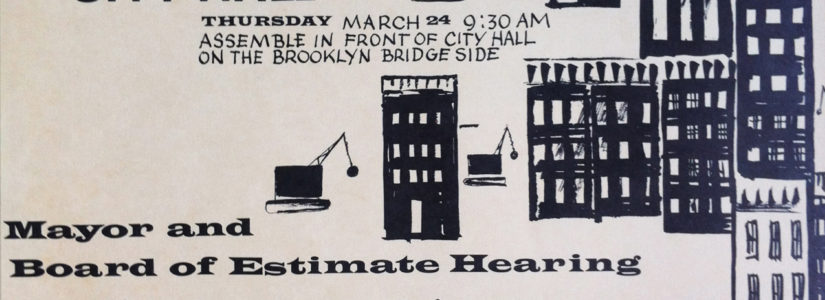
In Memoriam
October 14, 2014
Article from the Fall 2014 Newsletter
Carey Vennema, an attorney and activist who worked to protect the historic character of Greenwich Village and pioneered the use of zoning as a preservation tool, died July 24, 2014 at the age of 93. Known for riding around the Village with legal briefs strapped to the child seat of his bicycle, Vennema embodied the eccentric, intellectual flair of preservation activists in the 1960s.
Vennema was one of several attorneys who developed legal strategies for Save the Village, a group formed in 1959 by sculptor Arnold H. Bergier to pressure city government to use zoning and the powers of the Bard Act (the precursor to New York City’s Landmarks Law) to preserve the historic character of Greenwich Village. At that time the “blighted” neighborhood was vulnerable to large-scale apartment house development and other forms of urban renewal that often required mass evictions and the demolition of significant architectural fabric. Vennema and Save the Village used field surveys and demographic research to refute claims of blight. His innovative use of tax records in this grassroots effort was later recognized by activist Jane Jacobs as a key strategy in defeating a plan by Robert Moses to raze wide swaths of the neighborhood. And in March 1960, after a major offensive by Save the Village, the City adopted an emergency zoning amendment championed by the group which spared the Village from much inappropriate development until the neighborhood gained legal protection as an historic district nine years later. The Greenwich Village Historic District, the largest of its kind in the United States at the time, became the prototype for other such districts in New York City and across the country.
In the early 1960s, Vennema also lent his expertise to the Committee for Artist Housing, formed by a group of neighborhood activists who sought to legalize artist residences in industrial lofts. He served as treasurer on the committee, which also included such noted figures as Carol Greitzer, Robert Jacobs, and Ruth Wittenberg. The committee helped convince City Council to change the zoning code to allow artist residences in manufacturing districts, and it established a pilot project at 799 Greenwich Street, which set a pattern for artist residences at Westbeth and later in SoHo and Tribeca. The adaptive reuse of these buildings helped revitalize and preserve historic neighborhoods that were threatened by development proposals and neglect.
Vennema regularly summered on Swan’s Island, Maine, which he also helped preserve by drafting ordinances to protect the island’s shoreline and natural resources. A native of Passaic, New Jersey, Vennema was a World War II veteran and a graduate of Amherst College and NYU Law School. He is survived by his wife, Holly, four children, and 10 grandchildren.
Next time you find yourself in Riverside Park, take a moment to visit the memorial bench for artist and preservationist Robert Miles Parker and his partner David Van Leer. Parker’s death was reported in our fall 2012 newsletter; Van Leer passed away shortly after in 2013. The bench—located at the West 83rd Street entrance to the park, on the south side—was one of Parker’s favorite places to sit and sketch the whimsical pen-and-ink drawings for which he became so well known. These drawings of buildings, urban life, and streetscapes were published and exhibited across New York City. The bench is a fitting memorial to Van Leer and Parker, both of whom delighted in the historic architecture of the City.